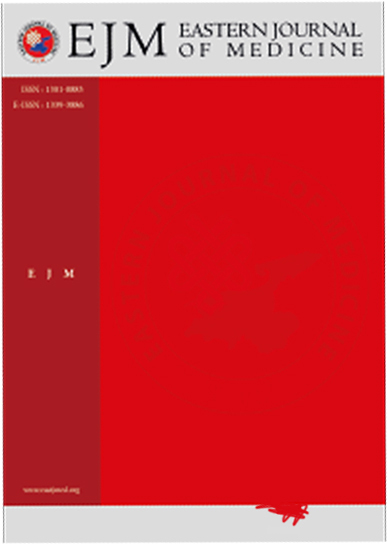Addressing Hypercalcemia: A 3-Year Retrospective Analysis in a Tertiary Care Center
Neyran Şerbetçi1, Fırat BAYRAKTAR2, ÖZLEM GÜRSOY ÇALAN3, Suleyman Cem Adiyaman2, MUSTAFA OKTAY TARHAN11Department of Internal Medicine, Dokuz Eylul University Faculty of Medicine, Izmir, Turkey2Department of Internal Medicine, Dokuz Eylul University Faculty of Medicine, Division of Endocrinology Izmir, Turkey
3Department of Biochemistry, Dokuz Eylul University Faculty of Medicine İzmir, Turkey
INTRODUCTION: Hypercalcemia is a significant electrolyte disorder and might be seen as the first finding of an occult disease. This study aimed to assess the clinical features of patients with hypercalcemia, to identify the underlying causes and to determine whether physicians undertook further diagnostic investigations to facilitate advanced diagnosis.
METHODS: Between July 2014 and June 2017, patients with total corrected calcium levels≥11 mg/dl, aged 18 and older were included in this study. The patients data collection was evaluated retrospectively.
RESULTS: 516 patients were evaluated for hypercalcemia. 35.9% had primary hyperparathyroidism (PHPT), 33.9% had hypercalcemia of malignancy (HCM) and 12.8% were found to have drug-induced hypercalcemia. Patients with HCM had significantly higher calcium levels than patients with PHPT, tertiary hyperparathyroidism, and drug-induced hypercalcemia (p=0.001, p=0.017, p=0.001, respectively). Multiple myeloma (27.4%) was the most frequent malignancy-caused hypercalcemia, followed by lung (18.9%) and breast cancer (9.1%).
DISCUSSION AND CONCLUSION: Our findings indicate that diagnostic tests may be inadequate, particularly in asymptomatic and/or mild-to-moderate cases. It is essential to evaluate clinical indicators and consider drug-induced hypercalcemia, which is notably prevalent in our study. Recognizing the possibility of multiple concurrent causes, including malignancy, drug use, and primary hyperparathyroidism (PHPT), is vital for effective management.
Manuscript Language: English














